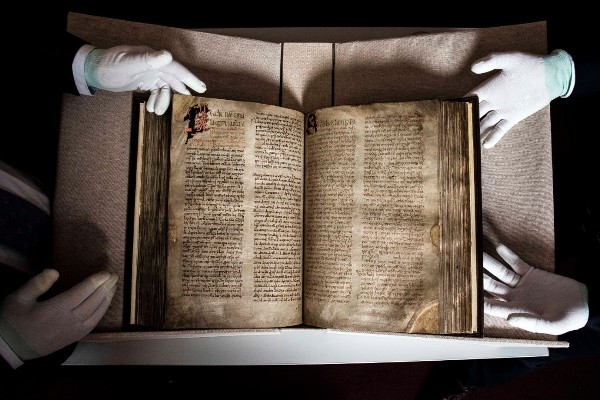
A celebrated Irish manuscript, the Book of Lismore, has returned to its ancestral beginnings in Cork.
This medieval manuscript, dating from as far back as the 15th century, contains some of the greatest masterpieces of medieval Irish literature in its 198 large vellum folios of religious and secular texts as well as the only surviving translation in Irish of the travels of Marco Polo.
The manuscript has been donated to University College Cork (UCC) by the Duke of Devonshire and the Chatsworth Settlement Trust. It is envisaged that the manuscript will be incorporated into a new project that has been launched to investigate for the first time, the materiality of Gaelic manuscripts from the Vernacular era.
In collaboration with the Department of Modern Irish, UCC, scientists and conservators from Tyndall, the Library of Congress, Washington, and Cambridge University, are involved in this notable, cultural project which takes a step back in time and Irish history. The project seeks to discover the source of materials and to learn how books were assembled during the Medieval Period.

The project team will work in close collaboration to address current knowledge gaps around Gaelic vernacular manuscripts of the vellum era (1100–1600), and the materials with which they were made and written. Any discoveries will enhance and consolidate palaeographical and codicological information about these manuscripts.
The project will contribute significantly to the understanding of material culture in late medieval Ireland. This will establish the study of ‘materiality’ as an essential element in the history of Irish Books from the later medieval period. The specific investigation of the Book of Uí Mhaine, and in the future of the Book of Lismore, will pave the way to the establishment of a general interdisciplinary approach to the analysis of manuscripts. The possibility that previously undated material might, as a result of materiality-analysis, be amenable not just to dating but, in time, to locative and familial identification, would be revolutionary.
Not only an invaluable source of information for Irish history, the Book of Lismore also represents a great opportunity for deepening the scientific research we at Tyndall are performing on Irish books on vellum. This research is being conducted under the auspices of an IRC Advanced Laureate Award made in 2019 to Professor Pádraig Ó Macháin of the Department of Modern Irish.
Access to state-of-the-art equipment and scientific tools (X-ray fluorescence, Raman spectroscopy and proteomics) combined with humanistic tools will assist the team on their important mission. The approach is completely novel for Ireland as a systematic materiality-study of the vernacular Gaelic manuscript has never been undertaken before, nor has consideration been given to how scientific analysis of inks and vellums might be useful to humanities scholars.
The project supports a team consisting of: PI (Prof Ó Macháin), two PhD students (Veronica Biolcati, Italy, and Anna Hoffmann, US), a postdoctoral fellow (yet to be appointed) and a senior research scientist (Dr Daniela Iacopino). The inherent interdisciplinary nature of the project will develop a wide range of analytical and data-management analysis skills in early career researchers, transferable skillsets and cutting-edge research expertise that are eagerly sought after, and that extend far beyond the field of heritage science.
